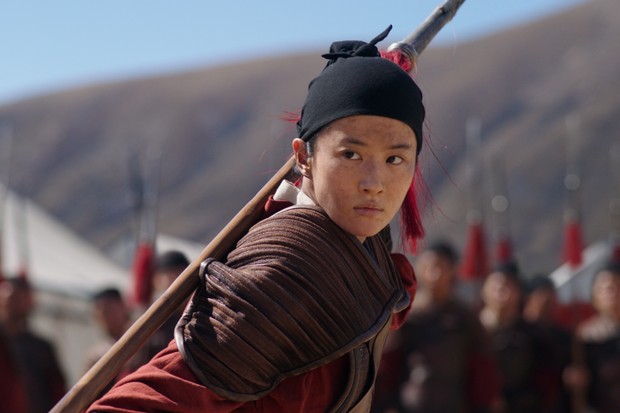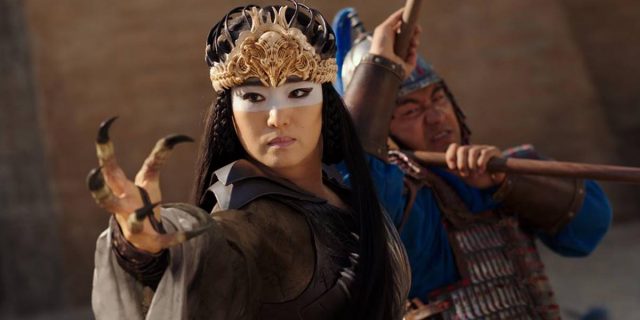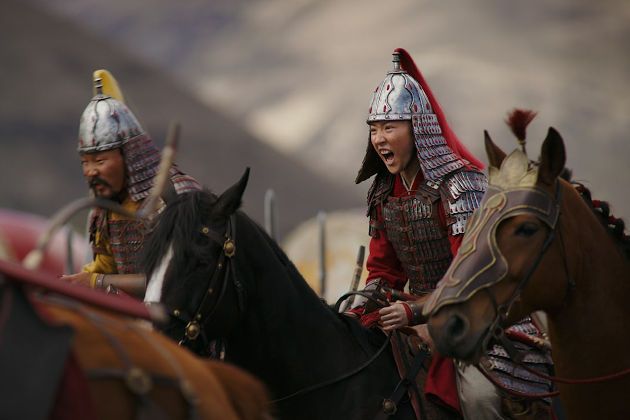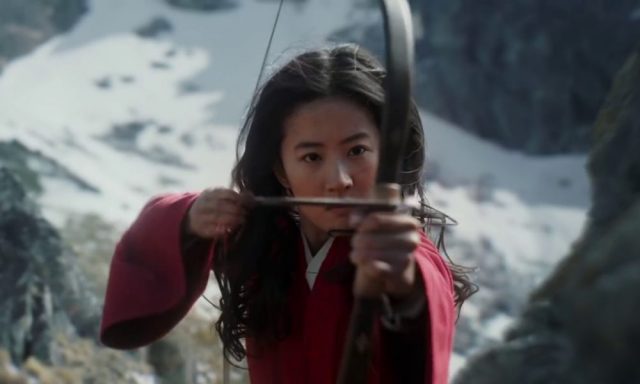2020 has been a rough year for Disney. Well, in fairness, it’s been a rough year for practically everyone, but Disney’s revenue streams have been hit especially hard by the ongoing COVID-19 pandemic. The closure of the various Disney Parks locations has cost Disney billions in revenue alone, and that’s before considering the financial impact that comes from having to delay almost all of their upcoming movies, along with production on virtually any Disney+ series that was supposed to arrive this year. Adding insult to injury is the fact that Disney was the first studio to be negatively impacted by a blockbuster movie delay, with their live-action remake of Mulan just barely missing its planned theatrical premiere, which was originally scheduled for just over a week after pandemic lockdowns were ordered.
Disney has since been allowed to resume active business in some of their Disney Parks resorts, and has managed to push at least one movie into theatres for the Summer (even if it was the heavily compromised 20th Century Studios offering, The New Mutants), but the damage has definitely been done for Mulan. Mulan’s live-action remake has ultimately had its North American theatrical release cancelled entirely (though it will still eventually come to theatres in markets like Asia and much of Europe), with the movie instead going straight to Disney+ for home streaming in markets like Canada and the U.S. Unlike Artemis Fowl however, a previous Disney movie that was originally planned for theatres before the pandemic forced it straight onto Disney+, Mulan is charging a premium $29.99 USD/$34.99 CAN fee (plus tax) to ‘own’ it on Disney+ early, before the movie is offered free to all Disney+ subscribers, starting this December.

That’s quite the fee, even if it understandably accounts for the children, friends and any other people sharing your Disney+ account that can also utilize your purchase. Yes, mercifully, just one person has to pay for Mulan before every profile on a shared Disney+ account has access to it. Even though this unusual domestic release model for Mulan is billed to be a one-off however, allegedly not influencing upcoming Disney-produced theatrical movies such as Black Widow and Soul, it is unfortunate for people in domestic markets, who may be paying extra to account for fellow Disney fans that may not actually exist. Of course, you do also have the option of waiting for Mulan to drop free to all Disney+ members in December, but that is itself inconvenient, especially if you happen to be passionate about the Disney animated classic that inspired this remake in particular.
Something that’s very evident throughout the entirety of the live-action Mulan as well, and probably a big part of the reason why Disney was ultimately okay with shrugging and just plunking the movie on Disney+ in North America, is that Mulan’s remake doesn’t feel like it was designed with Western audiences in mind. This is a bit predictable, considering that this story is based off a Chinese legend, and Disney has plenty of business interests in China, but Mulan is nonetheless geared heavily towards Asian audiences, even if this does mean that it hews closer to the original Chinese fable that inspired it. Some of the rich character subtext behind the original animated Mulan is sadly lost in this remake, especially with its disappointingly lightweight script, but I can at least respect that it’s trying to be a little more distinct than most of the previous live-action Disney remakes, even if it yet again won’t replace the animated classic that inspired it.
Yifei Liu brings the eponymous character to life in the live-action Mulan, an actress who is largely unknown in the West, but has an esteemed history of cinematic acting credits in China. Liu proves to be exceptionally cast as well, balancing strength and beauty to create a Mulan that, amazingly, manages to both light up the screen as a woman, while legitimately feeling credible when in disguise as a man. Liu’s Mulan is much more fierce and much less vulnerable than the animated Mulan that preceded her, but she’s nonetheless an impressive protagonist, if also one that’s pointed squarely at the path of being a warrior above all else. It’s a big switch from the animated Mulan, who was a nobody that became a warrior through sheer courage and persistence, but in this remake, Mulan has to find her courage through embracing her destiny, rather than simply trying to escape a life she’s not satisfied with.

A few recognizable characters from the animated original also re-appear in the live-action Mulan remake, naturally in more grounded forms. Mulan’s fellow soldiers, Yao, Ling and Chien-Po are maintained in the remake, complete with their cheeky personalities, while the animated Mulan’s cricket sidekick, Cri-Kee is redesigned as a human character named, “Cricket”, who is defined by his friendly spirit and innate good luck. The animated Mulan’s superior officer and love interest, Captain Shang meanwhile is split into two separate characters in the remake, with one being Donnie Yen’s Commander Tung, a hardened military leader who is acquainted with Mulan’s ailing father (and yet somehow doesn’t know that Mulan’s father has two daughters and no sons?), and the other being another recruit, Yoson An’s Chen Honghui, who serves as Mulan’s most faithful ally and support during her time training for the Chinese military. The supporting characters are plenty likable, but they admittedly don’t have much depth behind them. Even Yen, a martial arts superstar that’s just as celebrated in the West as he is in Asia, is left to play a basic military leader archetype as Tung, who simply exists to keep encouraging Mulan, and yet somehow be oblivious to Mulan’s true gender the entire time.
Interestingly, the villains have also been completely altered in this remake. The Huns and Shan-Yu are out, and they’ve been replaced with the proto-Mongolian Rouran tribe, a change that’s both more historically accurate, and more true to the original Chinese legend surrounding Mulan. These villains are led by Jason Scott Lee’s Bori Khan, who is essentially Shan-Yu in all but name and heritage (hell, he even looks like Shan-Yu to boot!). Bori Khan is another element of the Mulan remake that manages to be a little better than the animated original’s Shan-Yu as well, since his villain is a little more shrewd and impressive beyond his appearance.

Bori Khan also happens to be complemented by a witch that’s all-new to this remake, Xianniang, played by Memoirs of a Geisha’s Li Gong in a standout part. Xianniang is meant to replace Shan-Yu’s pet falcon, Hayabusa from the animated original, as referenced by how she often transforms into a falcon in this remake, and commands a full-scale magical arsenal, a major change from the animated original. More interesting than her abilities as a sorceress however is Xianniang presenting something of a dark reflection for Mulan’s character, being another gifted woman who is struggling to make her mark in a world that’s dominated by men. Some of the best scenes in this remake are shared between Mulan and Xianniang in fact, with Xianniang ultimately functioning as the strongest call to Mulan’s true destiny. This makes her a strong addition to the remake, and one that suits its shifted themes very well, even while Bori Khan purports to be the actual main antagonist.
Oh, and we should probably rip the band-aid off with one of the most pressing questions from fans of the animated original; No, Mushu is not in the live-action Mulan remake, in any capacity. This will no doubt be unsurprising to anyone that’s noticed the Mulan remake’s more serious and reverent tone, which certainly doesn’t accommodate a comic relief character like Mushu. There is a bit of a nod to Mushu in that Mulan is watched over by a guardian phoenix, which is intentionally designed to somewhat resemble the colouring of Mushu, but it never speaks, and it’s a purely theological deity that merely orbits Mulan during her toughest moments. Fans of Mushu will inevitably be bummed, but like I said, no way would Mushu work in this version of the story, so I doubt Mushu’s omission will be a big surprise to many people.
The live-action Mulan hits many of the same story beats as the animated original, though it does also mimic the foundational Chinese legend of Mulan more closely. This explains the change in villains from the Huns to the Rouran tribe most notably, along with the more mythical, chi-powered take on Mulan’s character. Even while the fundamental plot progression more or less follows that of the animated original as well, the details of various events throughout the remake are altered. There are some deliberate callbacks to the original animated Mulan, but they’re never quite as good as the all-new material, which grounds the remake in more recognizably Asian storytelling sensibilities, being much higher on superstition, destiny and higher purpose.

As much as the remake’s new story details can be cool and exciting at their best though, one thing definitely dragging down this Mulan remake is that its storytelling doesn’t feel all that complex or interesting. There’s a lot of spectacular window dressing, but the live-action Mulan still feels torn between the worlds of being an exciting Chinese war blockbuster, and being a family-friendly Disney blockbuster. This leaves Mulan’s live-action remake feeling impressively produced, but also a little emotionally hollow. You don’t get the same swells of sympathy or concern for Mulan’s character in the remake, especially when she’s now portrayed as being innately strong, and destined for great things. Sure, this makes the live-action Mulan more outwardly impressive, but she also feels less like a recognizable human being. This is rather strange, since this new Mulan is a live-action take on a character that the animated original seemed to inject more recognizable humanity into.
To its credit however, at least the live-action Mulan is somewhat successful at adding some genuinely novel and interesting new story material, especially compared to the past several live-action Disney remakes. Even in following the same story beats, the nature of Mulan’s internal conflict is different this time, and this means that her interactions with various characters, along with the threats that face her, are also noticeably different than they were in the animated original. The journey still ultimately leads you to the same place that the animated original did, but this remake does manage to pack in some added layers of depth when it comes to what defines Mulan’s strength, at least in an intellectual or ideological sense. Thus, this remake is more about appealing to Mulan as a warrior than Mulan as a person, and that is at least a new direction that gives the remake’s story something to do beyond simply struggling to imitate an animated classic.
The live-action Mulan is directed by Niki Caro, a Kiwi director who is best known for helming 2017’s The Zookeeper’s Wife. It’s surprising that the very socially-conscious Disney didn’t appoint an Asian director for their blatantly Asia-skewing blockbuster, but to her credit, Caro’s direction manages to feel pretty authentic. I suppose another defense for Caro in the directors’ role is that this Mulan remake is primarily a story about the journey of an extraordinary woman in a man’s world, with a showcase of China’s legends and/or history being secondary to that. As much as it’s potentially annoying that Mulan is essentially a superhero that was born great in this remake, whereas she was an ordinary woman who started from nothing in the animated original, Caro does manage to effectively center Mulan’s journey around a desire to live up to her own innate greatness. This is in contrast to the animated original, which instead positioned Mulan as yet another lost Disney Princess who wanted to find a place to belong, something that was admittedly a rather tired trope even in 1998.

This shift in Mulan’s character for the live-action remake informs every iota of direction. The live-action Mulan is thus designed to be more spectacular and mythical in tone, unfolding like a fable being recounted, rather than a somewhat grounded fish-out-of-water story. It’s pretty ironic that the live-action Mulan ends up being more exaggerated than its animated inspiration in this respect, but I suppose it does make this new take a little ‘cooler’, if nothing else. It’s also no doubt a reflection of the changing values behind female protagonists overall in 2020, as opposed to 1998. This live-action Mulan is directed to be more fierce and independent as a result, almost superhuman, like I said. This takes away from some of the emotional heft behind the animated original, but it does replace it with a more intellectual commentary on how a woman’s worth is decided, and most importantly, how a woman decides her own worth. Thus, which version of Mulan’s story you like better may come down to a matter of preference, and isn’t quite as clean-cut as it was with the more blatantly inferior remakes of Aladdin and The Lion King from last year.
That being said, it is worth noting that Caro’s direction can sometimes be hamstrung by Disney’s content mandates. Caro does what she can with the more large-scale war scenes, but it’s here where this Mulan remake tends to be at its weakest, at least in terms of spectacle. There are a few cool action beats here and there, but Caro seems to be better at choreographing the more claustrophobic, hand-to-hand action scenes, rather than the more widespread, war-style conflicts. Again though, some of this may be the fault of Disney, who no doubt won’t want their live-action Mulan remake to be too bloody and violent. This can sometimes put Caro between a rock and a hard place, because when the live-action Mulan tries to imitate its animated original, it predictably fails to compare. This remake is best when it’s allowed to do its own thing, and put its own spin on the material, which it usually excels at. This sometimes leaves you to wonder how much more impressive Mulan might feel if it was an independent production, one that didn’t have to adhere to its Disney license.
In case it wasn’t obvious from the marketing, the live-action Mulan remake is no longer a musical. Despite this however, Harry Gregson-Williams manages to put together a score that’s both reverent of the animated Mulan’s musical stylings, as well as true to its Chinese heritage. Even without musical numbers, the Mulan remake is often a treat for the ears, boasting lots of authentic Chinese instrumentation that nicely brings you into this movie’s world. It also contains lots of neat instrumental renditions of songs from the original animated Mulan, especially, “Reflection”, which cleverly serves as the basis of any musical theme for Mulan herself throughout the movie. Christina Aguilera also does a cover of, “Reflection” for this remake, for what that’s worth, and it’s fine I suppose, though certainly nothing that needed to be in the main storytelling. Considering how blatantly inferior the musical elements from last year’s Aladdin and The Lion King remakes were, perhaps it’s a blessing that Mulan simply ditches them entirely, letting the beauty behind its animated predecessor’s music subtly inform the remake’s score, and subsequently re-tool it into a stirring modern soundtrack that feels both epic and beautiful in equal measure.

Easily one of the most disappointing limitations to domestic audiences being forced to watch Mulan at home in the end is the fact that you won’t get quite as much punch out of the rest of the audio design, at least not without a fairly high-end home theatre system. Fortunately, even if its combat isn’t all that brutal or intense (despite this remake sporting a PG-13 rating, something very uncommon in Disney’s mainline productions!), there is a potent majesty to Mulan’s audio. The handful of supernatural sequences sound pretty good, and Mulan’s ‘chi’ being unleashed during select scenes also sounds appropriately powerful, even if it definitely feels like one of the biggest story concessions made for Asian audiences. Still, there’s something to be said about Mulan functioning well as a fantastical Asian martial arts movie with a Hollywood budget, even if it’s forced to represent most of its Chinese warfare with one hand tied behind its back.
For all the faults that seem to be commonplace among Disney’s current crop of live-action remakes, one at least can’t argue with the sheer amount of polish behind them. Mulan, as usual, is a gorgeous spectacle that’s packed to the brim with Disney polish, effortlessly bringing the world of its animated inspiration to life in a live-action setting. Some of the settings still feel a little too much like obvious sound stages, most notably the Imperial City, but the marriage between a Kung Fu movie and a semi-historic epic throughout much of Mulan manages to leap off the screen with aplomb. Even being forced to watch Mulan at home on Disney+ (with the option of 4K and HDR on supported displays, thankfully!), this is a colourful, visually striking movie with a diverse array of environments and an impressive blend between historic and fantastical costumes, one that’s a true delight to experience in motion!

Also commendable is how much emphasis is placed on physical, handmade stunt work throughout Mulan, even as this remake inserts new supernatural elements that weren’t present in the animated original. There’s a ton of wire work throughout the movie, which is another thing that definitely gives it an Asian blockbuster feel, and its solid close-quarters combat nicely helps to compensate for some of the nerfed warfare sequences, which are obviously making sure not to be so violent as to upset young children or sensitive parents. Some of the magic is a bit hampered by the loss of a movie theatre screen for sure, but Mulan is still sharply choreographed and visually well-realized, often doing a surprisingly strong job of emulating the rich palette of colours and details from its animated original.
Mulan is thankfully one of the better live-action Disney remakes, though it does still fall short of its animated inspiration in many respects. Even so, this new live-action take on the story is visually striking and fueled by the infectious strength of its eponymous heroine, who is effectively re-interpreted for a new generation, and, admittedly, a more Eastern audience. Mulan remains an impressive spectacle even when you’re forced to watch it at home via Disney+ (at least here in North America), though it’s unfortunately not worth rushing to pay the rather exorbitant premium fee in order to access it early. You’d be better served by simply waiting for Mulan to debut for free on Disney+ at the end of this year, where it’s less likely to make you feel disappointed and ripped off.

The good news however is that the live-action Mulan doesn’t repeat the same mistakes as last year’s remakes of Aladdin and The Lion King. It’s a more confident production that’s less afraid to venture out from the shadow of the animated original, adding its own storytelling ideas and directing flourishes that manage to help the live-action Mulan stand somewhat with the animated original, even if it predictably can’t surpass it. This certainly doesn’t create a compelling new standard for Disney’s live-action remakes, but at least the live-action Mulan manages to better justify its existence than most of the others, genuinely presenting its own distinct take on a classic Disney tale. That’s definitely more than can be said about the past several Disney remakes that preceded it!

